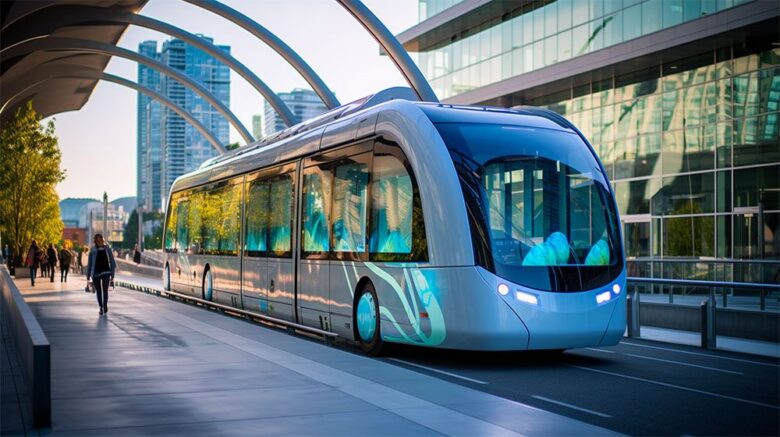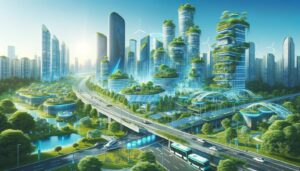As climate change intensifies and cities become more crowded, the world is moving toward better and cleaner mobility. Green mobility is a fast-growing trend that is all about putting environmental protection into practice. Electric vehicles (EVs), hydrogen cars, bike-sharing schemes, and self-driving buses are just a few of the many big changes taking place in the transportation sector. These green solutions do more than just reduce emissions; they are changing the way cities and towns work, how we travel, and how businesses operate.
Eco-innovation in mobility integrates technology, ecology, and practicality to foster environmental and economic sustainability. It offers a broader picture of the cities and towns of the future: less noise, better air quality, and smarter roads. Looking at this transformation, it is clear that the path to sustainability is moving forward step by step.
Switching to Greener Modes of Transport:
Over the past decade, governments, car manufacturers, and technology companies have invested heavily in eco-friendly mobility. Electric cars, hybrid buses, and even solar-powered bicycles are replacing automobiles that run on polluting fuels. This change is not just about environmental concerns but also about new regulations and the demand for cleaner products. To reduce pollution, cities around the world are establishing low-emission zones and banning diesel cars. Access is becoming more important than ownership, and services like car sharing and ride-hailing are making it easier to get around. Green transport is becoming the new norm for more and more city dwellers. New infrastructure, including electric vehicle charging stations, smart roads, and collaborative public transportation systems, is accompanying this change.
Electric Vehicles Are Leading the Way:
Electric vehicles are probably the best-known example of green transportation. Electric vehicles are growing in popularity at a record pace because they produce no pollution and are cheaper to operate. Not only did Tesla lead the way in the electric vehicle trend, but now all major automakers are following suit, from Ford’s electric trucks to Volkswagen’s ID series. In addition, battery technology is developing rapidly, making electric vehicles more affordable and with more stable ranges.
Charging stations are expanding, and fast chargers are now more common in cities and along highways. To encourage people to buy electric vehicles, governments are offering tax breaks and rebates, and companies are electrifying their fleets to meet environmental goals. While battery recycling and grid strain persist, the development of electric vehicles is steadily progressing.
What Role Does Public Transport Play in Green Mobility?
Public transport is a key component of future eco-innovation. Electric buses, trains, and trams are a lower-emission alternative to driving. In major cities such as Amsterdam, Seoul, and Bogota, investing in eco-friendly public transport systems has paid off, with reduced congestion and air pollution. To get more people to use public transport, some cities are even working to make it free or cheap.
The rise of smart dispatching, real-time tracking, and cashless payment methods has made public transport easier and more efficient. Integrated systems that connect bicycles, e-scooters, buses, and trains via a unified app have also made it easier for people to get around. Clean, efficient, and effective public transport will become an important part of urban life and will continue to grow. They can carry a large number of passengers with a low impact on the environment.
Two-Wheel Solutions: Bicycles and E-Scooters
In many places, two-wheeled transportation is leading the way in green mobility. E-scooters and bicycles are quick, cheap, and produce no pollution when used for short distances. In cities, bike and scooter sharing programs are extremely popular. They are easy to use thanks to smart locks, GPS tracking, and mobile payments. These small vehicles can reduce people’s dependence on cars and help ease traffic congestion. To address this challenge, cities are building bike lanes, expanding no-parking zones, and prioritizing pedestrian-friendly infrastructure. More and more commuters are buying electric bikes because they combine the convenience of cycling with the ease of motorized assistance. These lightweight, adaptable vehicles are perfect for connecting the “first mile” and “last mile” of travel, making them an essential part of modern green cities.
Autonomous Vehicles and AI in Sustainable Transportation:
Autonomous vehicles (AVs) combine green technology with artificial intelligence to change the way people get around. Self-driving electric shuttles and cars are still in the early stages of research, but they could help reduce pollution and congestion. These vehicles can automatically find the best routes, reduce collisions, and operate 24/7, making them ideal for personal and public transportation. Logistics companies are already using AI-based fleet management to reduce fuel consumption and increase productivity. Autonomous vehicles could play a key role in the design of sustainable cities in the future, as smart mobility systems communicate with traffic signs and infrastructure to make travel easier and more environmentally friendly. This technology is still in development, but it has the potential to transform the way we travel, making it more environmentally friendly and efficient.
Conclusion:
Eco-innovation in mobility is no longer a dream of the future but a reality that is changing the way we live, travel, and connect. As the world warms and urbanization develops, green mobility has become a necessary way to balance our pursuit of a better lifestyle with protecting the environment. Green mobility is a powerful force that can be achieved through electric vehicles, smarter public transportation, micromobility, or vehicles powered by artificial intelligence. Green mobility can clean the air, reduce the use of fossil fuels, and help cities become healthier and more livable. But achieving this goal requires continued support from people, businesses, and governments.Green mobility encompasses more than just purchasing a new car; it involves transforming our travel habits and gradually improving the world.
FAQs:
1. What does “green mobility” mean?
Green travel includes electric vehicles, public transportation, scooters, and other eco-friendly modes of travel that use fewer fossil fuels and reduce pollution.
2. Are electric vehicles eco-friendly?
Yes, electric vehicles do not pollute the air and are better for the planet throughout their lifespan, especially when powered by clean energy.
3. How can public transport help people travel green?
Well-functioning, electric public transport can reduce the number of private cars on the road, contribute to cleaner air, and reduce traffic congestion.
4. What role does artificial intelligence play in green mobility?
Artificial intelligence can improve traffic flow, optimize routes, and reduce vehicle consumption, especially in logistics systems and autonomous driving systems. This means lower fuel consumption and fewer emissions.
5. Can micromobility replace cars for daily journeys?
Micromobility options such as electric bikes and scooters are ideal for short journeys and can significantly reduce car dependency in many urban areas.




